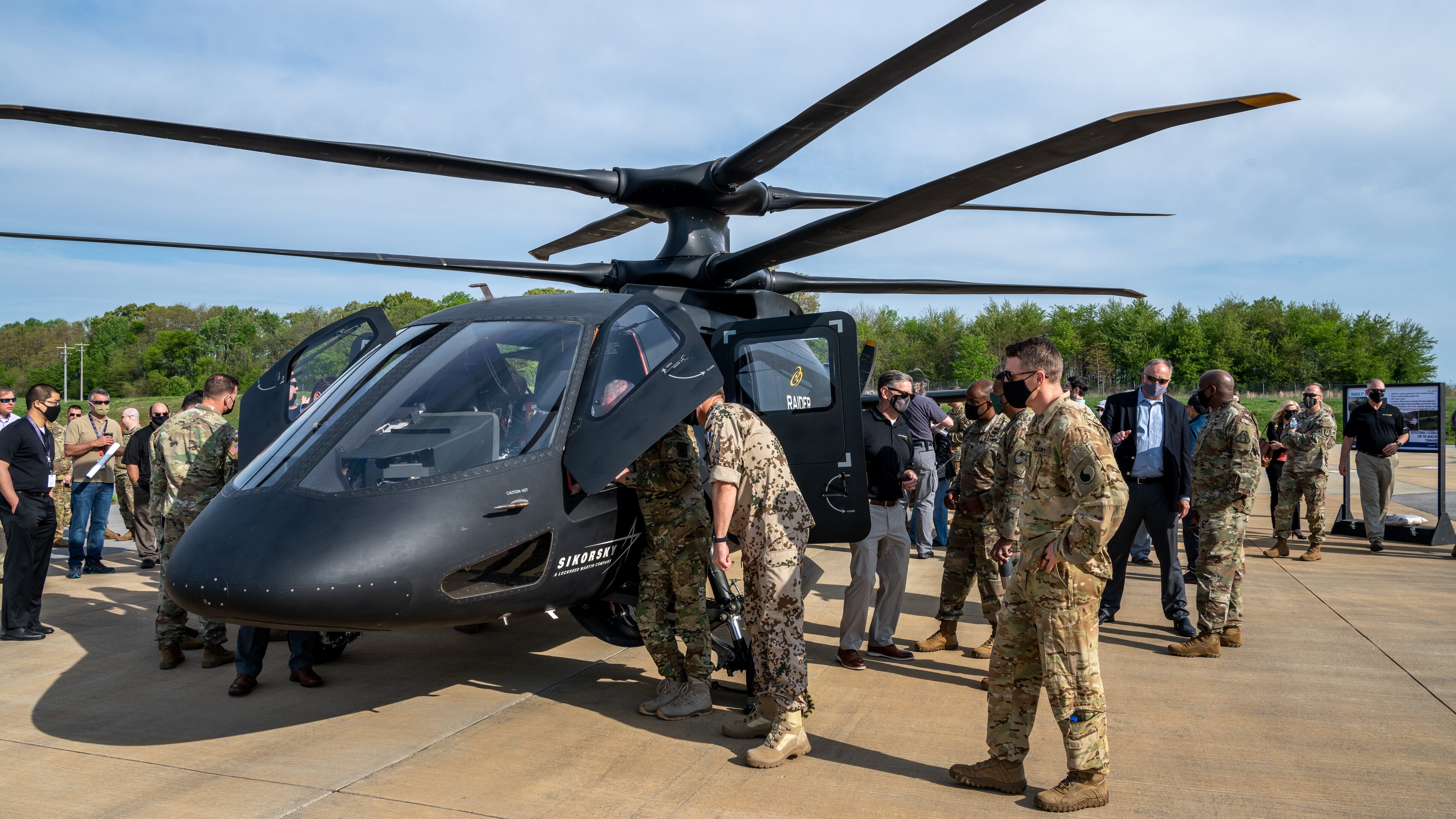
Soldiers check out the Sikorsky S-97 Raider at Redstone Arsenal in April.(Photo courtesy Sikorsky, a Lockheed Martin Company)
AUSA: Even with the fielding of the Army’s future vertical lift capabilities years away, the service is adjusting how it trains its aviators to prepare them for new tactics, techniques and procedures for future wars.
For the last 20 years of counter-terrorism operations, Army rotorcraft have operated higher altitudes in battle. But for the future battlefield, the Army will fly in the lower tier of airspace to avoid the anti-access/area denial capabilities of advanced adversaries like China and Russia, according to Maj. Gen. David Francis, commander of the Army Aviation Center of Excellence.
“We’re going to be flying in lower flight profiles than we have over the last 20 years in counterinsurgency operations and so, even today, we are changing the way we train Army aviators,” Francis said Wednesday at a Defense News event at the annual Association of the United States Army (AUSA) conference. “We’re changing the way that we develop our leaders to be able to operate in that environment.”
RELATED: Four Questions With Army Futures Commander Gen. John Murray On Modernization
The Army is modernizing its rotorcraft fleet as part of its ambitious overall modernization strategy. The service is building a next generation scout rotorcraft with its Future Attack Reconnaissance Aircraft, which is supposed to be fielded in 2030. Textron’s Bell and Lockheed Martin’s Sikorsky are squaring off in the competition. The Army is also trying to field a Future Long-Range Assault Aircraft by fiscal 2030 as part of its future vertical lift program.
According to Maj. Gen. Walter Rugen, director of the Army’s Future Vertical Lift Cross-Functional Team, flying at lower altitude challenges the anti-access/area denial capabilities built by near-peer adversaries like Russia and China. Those systems are much more effective against aircraft that fly high and fast, he said.
“The guys that come in low — in the lower tier — there’s a lot of gaps, and we’re exploiting those gaps to fight and win,” Rugen said.
RELATED: Soldiers To See Prototypes Of 24 ‘Signature’ Modernization Systems By FY23
Preparing the service for new vertical lift capabilities has required many changes in training. Francis said at the event that the service has changed the way the service does emergency procedures “to be able to handle aircraft at those lower altitudes and account for the improved technology that we’re going to have.”
He added that the service is changing how it faces off against “various” air defense threats using the technology that’s part of the aircraft survivability equipment and future tactics, techniques and procedures. Aircraft survivability, Francis said, includes both aircraft design, survivability equipment on-board and aviator training.
Rugen said that most of the survivability work to prevent a shoot-down is classified, but the service had taken 25 steps to improve survivability, or seven more than Rugen said the RAND Corp. had given Army aviation in a series of reports.
Building the aircraft with a modular open systems architecture is another way the service plans to address survivability and add in advanced capability in the future as technology evolves.
“What that is going to enable us to do it — and again we have not been able to do this in the past at an affordable cost — is make rapid changes and upgrades to our systems that that will allow us to keep pace and stay ahead of the developments of our adversaries out there in terms of air defense systems and other other technological advancements,” Francis said.






















